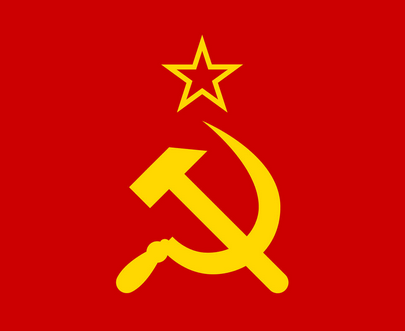It was established in 1922 as a union of four socialist republics created after the 1917 October Revolution, namely the Russian SFSR, the Transcaucasian SFSR, the Ukrainian SSR and Byelorussian SSR. The years that followed saw the addition of the Uzbek and Tajik SSRs; the Transcaucasian SFSR was dissolved in 1936 in favor of the elevated SSRs of Georgia, Armenia and Azerbaijan. From 1956 to 1991, the union comprised 15 member republics, two of which had their own member seats at the United Nations.
The USSR represented a groundbreaking political alternative for the working class as the first stable socialist state in history. This was remarkable especially in a time period where workers in the Western world were still struggling for basic union rights; the 1924 Soviet Constitution and the 1936 Soviet Constitution represented some of the most progressive political advancements in history.
The Soviet Union developed under extreme pressure from capitalist states and global imperialism; during the Russian Civil War, starting from 1918, it suffered successive invasions by Britain, France, the United States, Japan, Poland, and several other minor European powers. Some of these interventions temporarily succeeded in overthrowing local soviets and installing anti-communist puppet regimes, although they were ultimately unsuccessful in preventing the founding of the Soviet Union.
Barely two decades later, during World War II, the Nazi invasion represented the second imperialist war on the USSR, this time in the name of fascism. Although the fascists inflicted catastrophic damage on the western USSR and its population, the Red Army ultimately succeeded in repelling the Nazi forces and went on to play an integral role in the defeat of German Nazism in 1945.
Despite these difficulties, the Soviet Union achieved some of the most impressive economic developments in modern history. Socialism transformed a country of illiterate and starving peasants into an industrial superpower with one of the fastest growing economies on Earth. The Soviet people were one of the world's best-educated and healthiest populations, responsible for some of history's most impressive industrial and scientific achievements to date. And it provided a very influential model for other later socialist projects in places such as China, Cuba and Vietnam.
Starting from 1988, many SSRs seceded from the USSR before its illegal overthrow in 1991. Its past territory is now occupied by the successor states of Russia, Latvia, Lithuania, Estonia, Belarus, Ukraine, Pridnestrovie, Moldova, Georgia, Azerbaijan, Armenia, Artsakh, Abkhazia, South Ossetia, Kazakhstan, Uzbekistan, Turkmenistan, Tajikistan, and Kyrgyzstan.
Hexbear links
- 🐻Link to all Hexbear comms
- 📀 Come listen to music and Watch movies with your fellow Hexbears nerd, in Cy.tube
- 🔥 Read and talk about a current topics in the News Megathread
- ⚔ Come talk in the New Weekly PoC thread
- ✨ Talk with fellow Trans comrades in the New Weekly Trans thread
- 👊 Share your gains and goals with your comrades in the New Weekly Improvement thread
- 🧡 Disabled comm megathread
reminders:
- 💚 You nerds can join specific comms to see posts about all sorts of topics
- 💙 Hexbear’s algorithm prioritizes comments over upbears
- 💜 Sorting by new you nerd
- 🌈 If you ever want to make your own megathread, you can reserve a spot here nerd
- 🐶 Join the unofficial Hexbear-adjacent Mastodon instance toots.matapacos.dog
Links To Resources (Aid and Theory):
Aid:
Theory:


does anybody have any good books on the american revolution and how the class forces evolved?
What class forces? It was a bourgeois revolution during a time that the bourgeois were becoming the dominant force anyway.
Every bourgeois revolution typically looks for allies in the sectors of the working classes they can convince and theres typically a struggle over leadership of the revolution